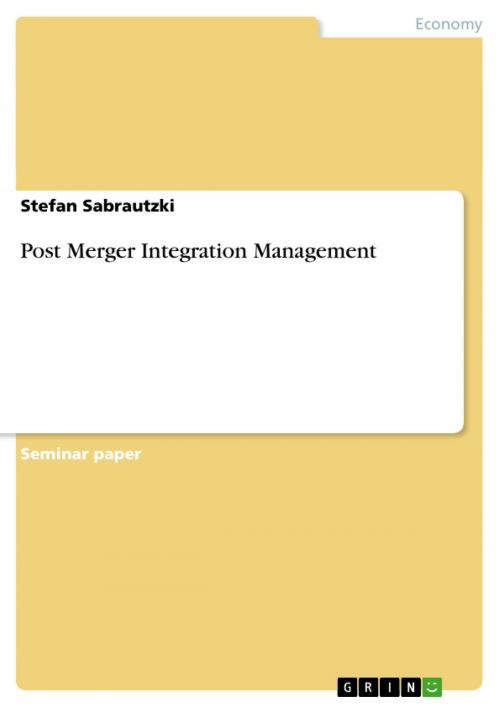| Author: | Stefan Sabrautzki | ISBN: | 9783640576876 |
| Publisher: | GRIN Publishing | Publication: | March 26, 2010 |
| Imprint: | GRIN Publishing | Language: | English |
| Author: | Stefan Sabrautzki |
| ISBN: | 9783640576876 |
| Publisher: | GRIN Publishing |
| Publication: | March 26, 2010 |
| Imprint: | GRIN Publishing |
| Language: | English |
Seminar paper from the year 2010 in the subject Business economics - Investment and Finance, grade: 1,7, University of Applied Sciences Berlin, language: English, abstract: Today's economy is shaped by globalization with market conditions changing rapidly and com-petition growing in many areas. In order to stay competitive, in every region of the world very often companies try to merge with other companies from either within their own market or from other regions or markets. Mergers and acquisitions (M&A), the term itself is used for diverse kinds of cooperation between companies, received a lot of public attention during the past dec-ades as several major M&A transactions have been effected. Although during the current worldwide economic struggles the global M&A transaction volume declined, expansion through M&As remains a central corporate growth strategy tool. To merge companies successfully, integration and harmonization processes which require a lot of attention and resources are very important in order to align the previously separate compa-nies' operations, strategies and culture. As only very few M&A transactions generate satisfying results and achieve their strategic and financial objectives, subject of this paper is to determine the requirements for successful post merger integration. After describing the range of motives for companies to engage in M&A, I will explain the challenges and the importance of post merger integration management (PMI) and provide guidelines how it can contribute to make a M&A transaction a success.
Seminar paper from the year 2010 in the subject Business economics - Investment and Finance, grade: 1,7, University of Applied Sciences Berlin, language: English, abstract: Today's economy is shaped by globalization with market conditions changing rapidly and com-petition growing in many areas. In order to stay competitive, in every region of the world very often companies try to merge with other companies from either within their own market or from other regions or markets. Mergers and acquisitions (M&A), the term itself is used for diverse kinds of cooperation between companies, received a lot of public attention during the past dec-ades as several major M&A transactions have been effected. Although during the current worldwide economic struggles the global M&A transaction volume declined, expansion through M&As remains a central corporate growth strategy tool. To merge companies successfully, integration and harmonization processes which require a lot of attention and resources are very important in order to align the previously separate compa-nies' operations, strategies and culture. As only very few M&A transactions generate satisfying results and achieve their strategic and financial objectives, subject of this paper is to determine the requirements for successful post merger integration. After describing the range of motives for companies to engage in M&A, I will explain the challenges and the importance of post merger integration management (PMI) and provide guidelines how it can contribute to make a M&A transaction a success.















